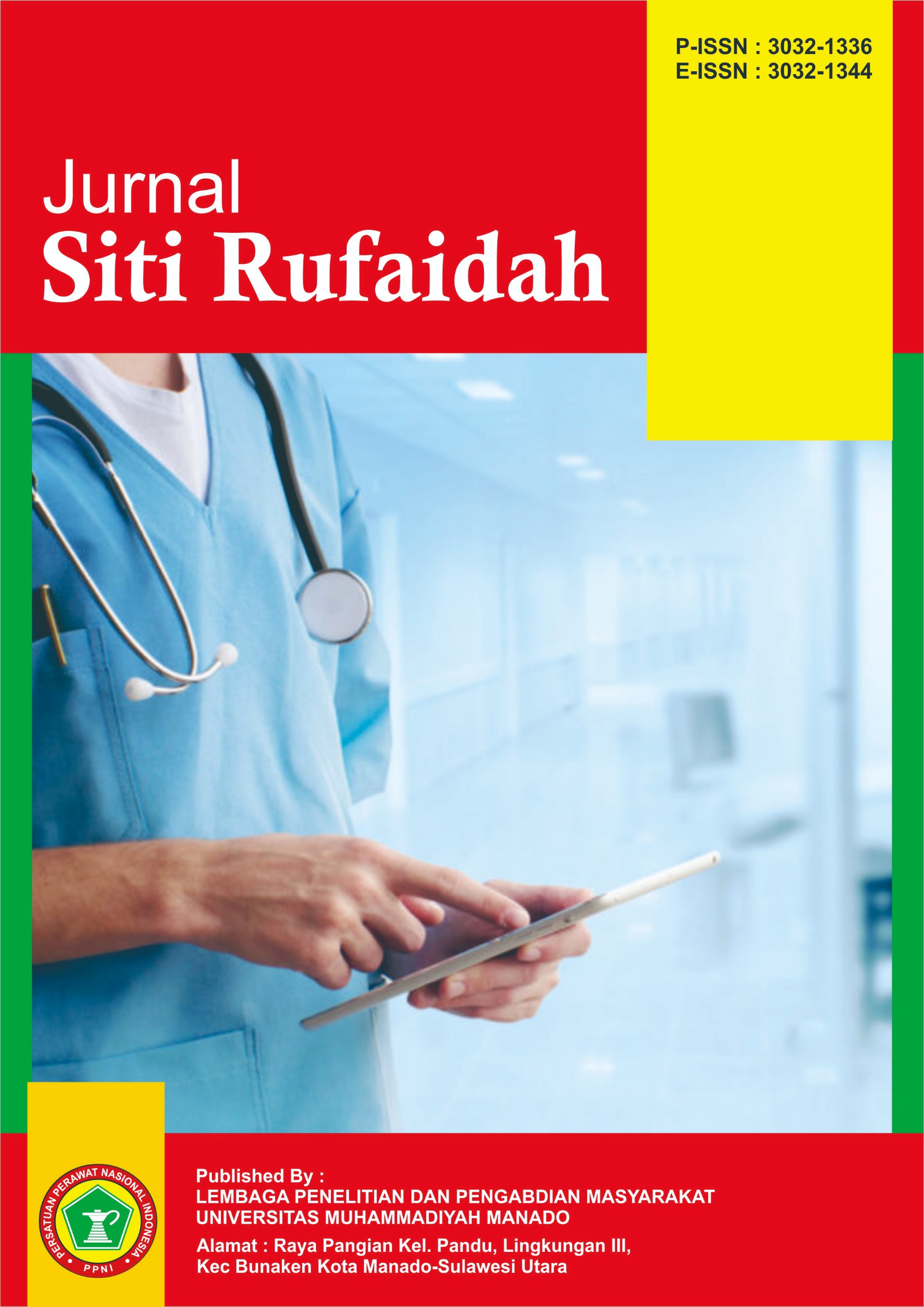Hubungan Antara Status Gizi dengan Kejadian Malaria di Puskesmas Senggo
DOI:
https://doi.org/10.57214/jasira.v3i3.221Keywords:
Malaria, Nutrient, Phc, Endemicites, PapuaAbstract
Based on global reports, there were 247 million malaria cases in 2021, increasing from 245 million cases in 2020. In Indonesia, the Ministry of Health recorded 254,055 malaria cases in 2020. Three provinces—Maluku, Papua, and West Papua—have not yet achieved malaria elimination. Malaria is an acute febrile disease caused by the Plasmodium parasite, transmitted to humans through bites of infected female Anopheles mosquitoes. It remains a significant public health problem due to its impact on morbidity, mortality, and productivity in endemic areas. This study aimed to examine the relationship between nutritional status and malaria incidence among patients in the working area of Senggo Health Center. An analytical descriptive approach with a cross-sectional study design was applied. The study population included all malaria patients examined at Senggo Health Center, Citak Mitak District, Papua, totaling 559 patients in February. A sample of 243 respondents was selected using the Table for Determining Needed Size of a Random Sample. Results showed that most respondents suffered from mild malaria, and the majority had normal nutritional status. Statistical analysis indicated a significant relationship between nutritional status and malaria incidence in the Senggo Health Center area. Respondents with poor nutritional status were more likely to experience malaria with severe symptoms compared to those with normal or good nutritional status. These findings highlight the critical role of nutrition in malaria prevention. Nutritional interventions should be integrated with vector control measures and public health education to reduce malaria incidence and improve community health. Improving nutritional status, particularly in endemic regions, is essential for enhancing immunity, reducing disease severity, and supporting overall malaria control efforts. Nutritional status significantly influences malaria incidence. Public health programs targeting nutritional improvement are necessary to complement existing malaria control strategies, reduce case numbers, and promote better health outcomes in endemic areas.
References
Chaudhary, A., Kataria, P., Surela, N., & Das, J. (2022). Pathophysiology of cerebral malaria: Implications of MSCs as a regenerative medicinal tool. Bioengineering, 9, 1–12. https://doi.org/10.3390/bioengineering9060263
Chukwuocha, U. M., Njoku, P. U., Ezelote, J., Nwaokoro, J. C., & Iwuala, C. C. (2019). Nutritional status and malaria risk in children under five years in Owerri Municipality, South Eastern, Nigeria. Hong Kong Journal of Paediatrics Research, 2(2), 30–35.
Daud, I. I., Coleman, C. B., Smith, N. A., Ogolla, S., Simbiri, K., Bukusi, E. A., … Rochford, R. (2015). Breast milk as a potential source of Epstein-Barr virus transmission among infants living in a malaria-endemic region of Kenya. The Journal of Infectious Diseases, 212, 1735–1742. https://doi.org/10.1093/infdis/jiv290
Debora, J., Rinonce, H. T., Pudjohartono, M. F., Astari, P., Winata, M. G., Kasim, F., … Masyarakat, K. (2018). Prevalensi malaria di Asmat, Papua: Gambaran situasi terkini di daerah endemik tinggi. Jurnal COEMPH, 1, 11–19. https://doi.org/10.22146/jcoemph.38309
Ebhuoma, O., & Gebreslasie, M. (2018). Remote sensing-driven climatic/environmental variables for modelling malaria transmission in Sub-Saharan Africa. International Journal of Environmental Research and Public Health, 13(6), 584. https://doi.org/10.3390/ijerph13060584
Hello Sehat. (2022). Mengenal ciri-ciri nyamuk Anopheles penyebab penyakit malaria. https://hellosehat.com/infeksi/infeksi-serangga/nyamuk-malaria/
Hermayudi, & Ariani, A. P. (2017). Penyakit daerah tropis. Nuha Medika.
Hidayat, A. A. A. (2018). Metodologi penelitian keperawatan dan kesehatan (T. Utami, Ed.). Salemba Medika.
Id, N. S., Bigoga, J., Ngondi, J., Njeambosay, B., Esemu, L., Nyonglema, P., … Oben, J. (2019). Relationship between malaria, anaemia, nutritional and socio-economic status amongst under-ten children in the North Region of Cameroon: A cross-sectional assessment. PLoS ONE, 16, 1–17.
Kementerian Kesehatan Republik Indonesia. (2017). Buku saku tatalaksana kasus malaria. Dirjen Pencegahan dan Pengendalian Penyakit.
Khuu, D., Eberhard, M. L., Bristow, B. N., Javanbakht, M., Ash, L. R., Shafir, S. C., & Sorvillo, F. J. (2018). Risk factors for severe malaria among hospitalized patients in the United States, 2000–2014. Infection, Disease & Health, 23(2), 93–106. https://doi.org/10.1016/j.idh.2018.01.002
Limanto, T. L. (2010). Hubungan antara status gizi dengan malaria falciparum berat di ruang rawat inap anak RS St. Elizabeth Lela, Kabupaten Sikka, Flores, NTT. Sari Pediatri, 11(5), 363–366. https://doi.org/10.14238/sp11.5.2010.363-6
Limanto, T. L. (2016). Hubungan antara status gizi dan malaria falciparum berat di ruang rawat inap anak RS St. Elizabeth Lela, Kabupaten Sikka, Flores, NTT. ResearchGate, 11. https://doi.org/10.14238/sp11.5.2010.363-6
Manumpa, S. (2015). Pengaruh faktor demografi dan riwayat malaria terhadap kejadian malaria. Journal of Business and Economics, 4(3), 338–348. https://doi.org/10.20473/jbe.v4i3.338-348
Manumpa, S. (2016). Pengaruh faktor demografi dan riwayat malaria terhadap kejadian malaria (studi di Puskesmas Moru). Journal of Business and Economics, 4(3), 338–348. https://doi.org/10.20473/jbe.v4i3.338-348
Masriadi. (2017). Epidemiologi penyakit menular. Raja Grafindo Persada.
Notoatmodjo, S. (2018). Metodologi penelitian kesehatan. Rineka Cipta.
Onukogu, S. C., Ogwuche, R. A., Ibrahim, J., & Jaiyeola, T. O. (2020). Role of nutrition in the management and control of malaria infection: A review. ResearchGate, 107(June), 58–71.
P2P KemenKes. (2021). Kasus malaria di Indonesia menurun, NTT jadi provinsi pertama di kawasan timur berhasil eliminasi malaria. http://p2p.kemkes.go.id/kasus-malaria-di-indonesia-menurun-ntt-jadi-provinsi-pertama-di-kawasan-timur-berhasil-eliminasi-malaria/
Quaresima, V., Agbenyega, T., Oppong, B., Awunyo, J. A. D. A., Adomah, P. A., Enty, E., … Castelli, F. (2021). Are malaria risk factors based on gender? A mixed-methods survey in an urban setting in Ghana. Tropical Medicine and Infectious Disease, 6(161), 2–14. https://doi.org/10.3390/tropicalmed6030161
Santjaka, A. (2013). Malaria: Pendekatan model kausalitas. Nuha Medika.
Setiawan, D., & Prasetyo, H. (2015). Metodologi penelitian kesehatan untuk mahasiswa kesehatan. Graha Ilmu.
Sucipto, C. D. (2015). Manual lengkap malaria. Gosyen Publishing.
Sugiyono. (1998). Metode penelitian administrasi. Alfabeta.
Susanti, F., & Wantini, S. (2014). Faktor-faktor yang berhubungan dengan kejadian malaria di wilayah kerja UPT Puskesmas Rajabasa, Kecamatan Rajabasa, Kabupaten Lampung Selatan. Jurnal Analis Kesehatan, 3(1), 327–338.
Valentim, M. (2018). Cerebral malaria. Journal of Neurology & Stroke, 8(4), 216–221. https://doi.org/10.15406/jnsk.2018.08.00313
Wijaya, A. S., & Putri, Y. M. (2013). Keperawatan medikal bedah II (KMB2). Nuha Medika.
World Health Organization. (2022). Malaria.
Downloads
Published
How to Cite
Issue
Section
License
Copyright (c) 2025 Jurnal Siti Rufaidah

This work is licensed under a Creative Commons Attribution-ShareAlike 4.0 International License.






